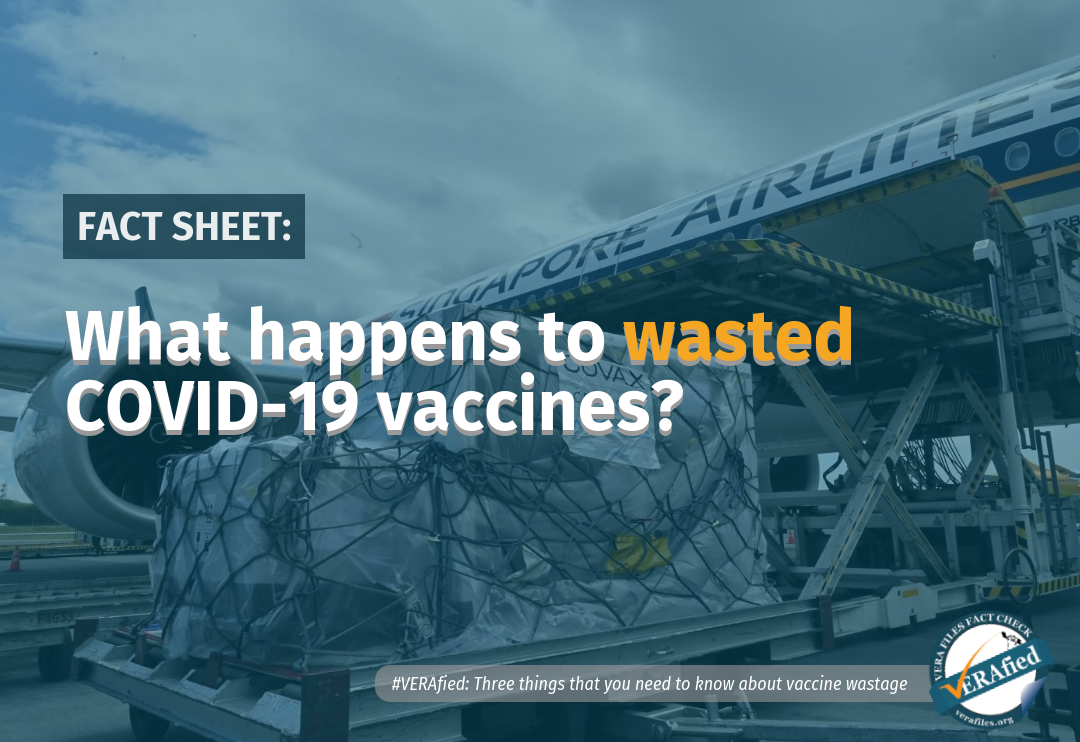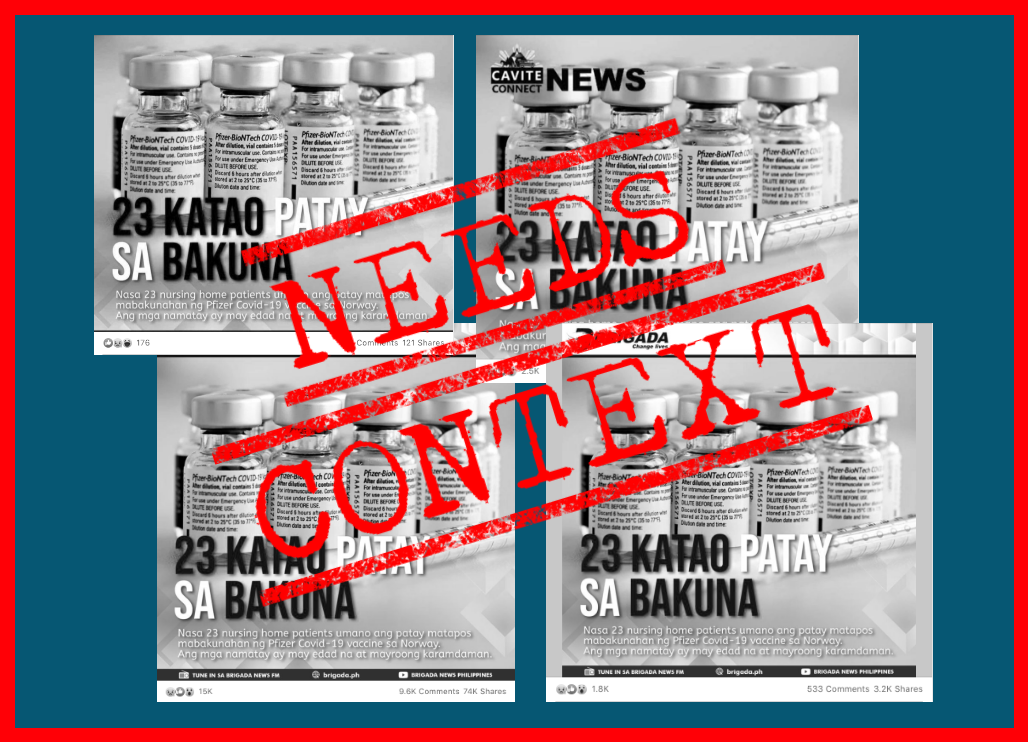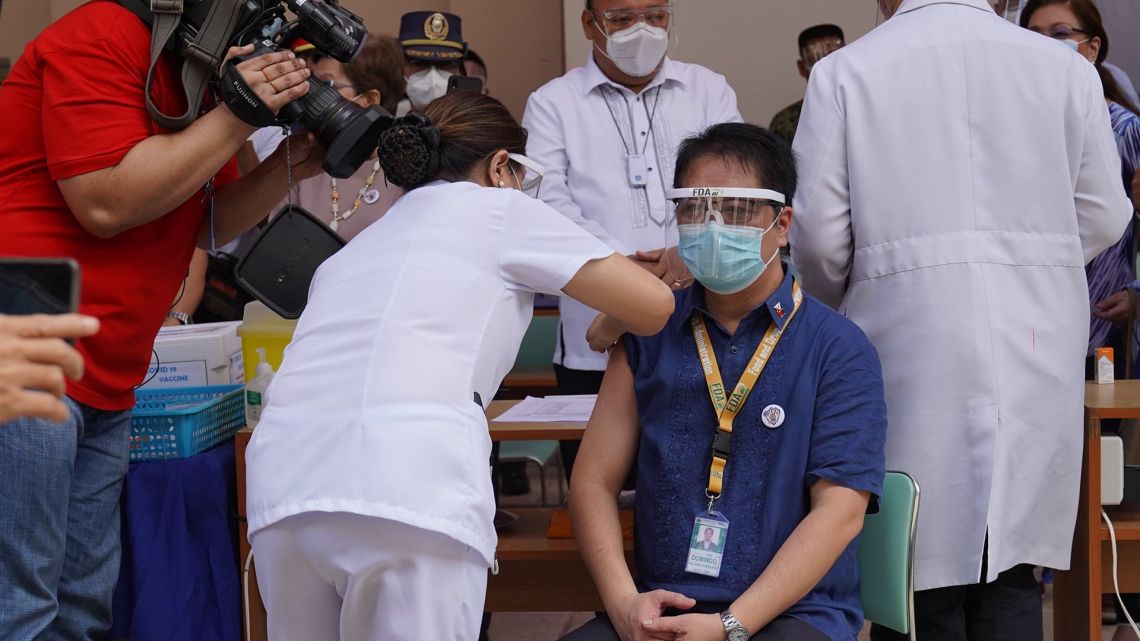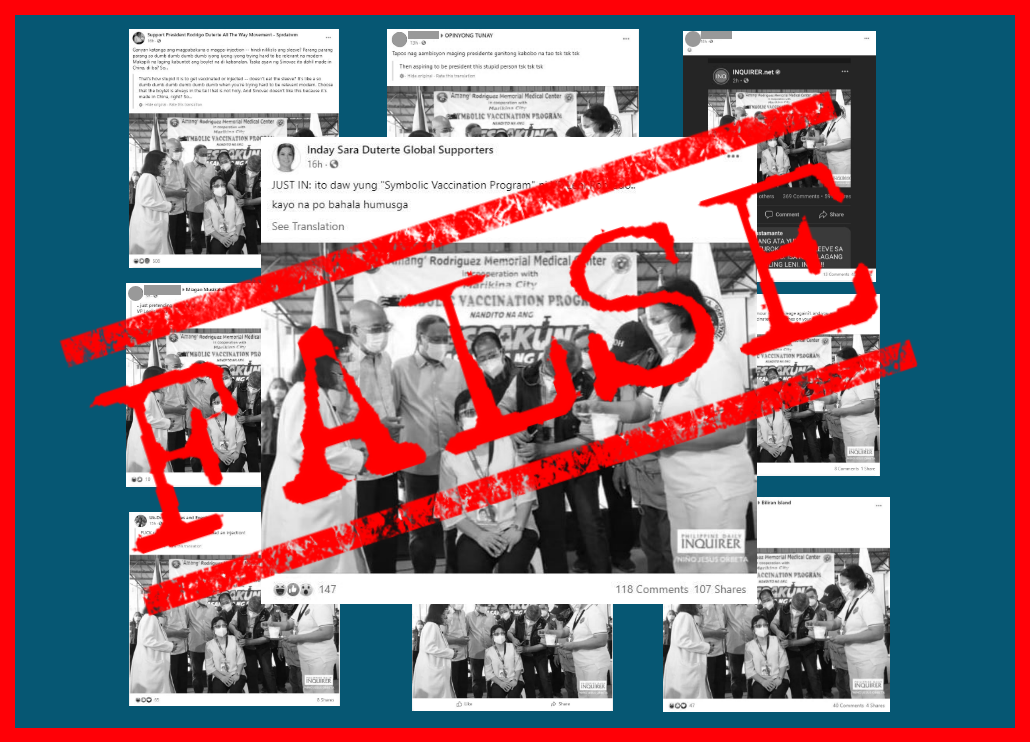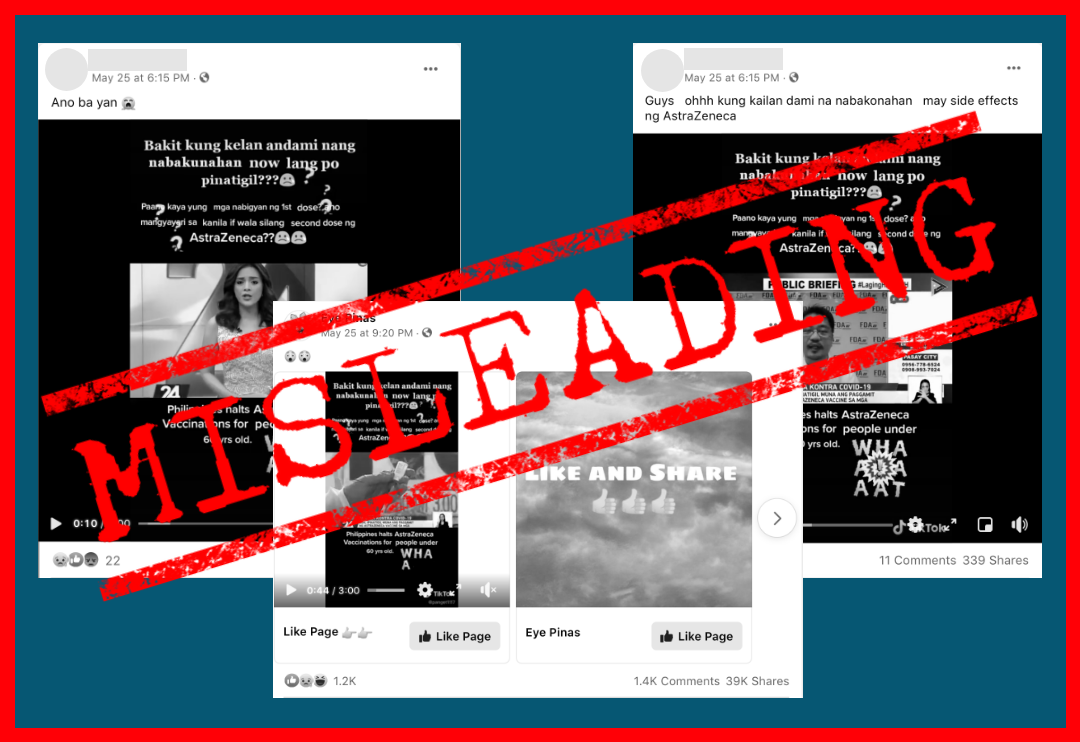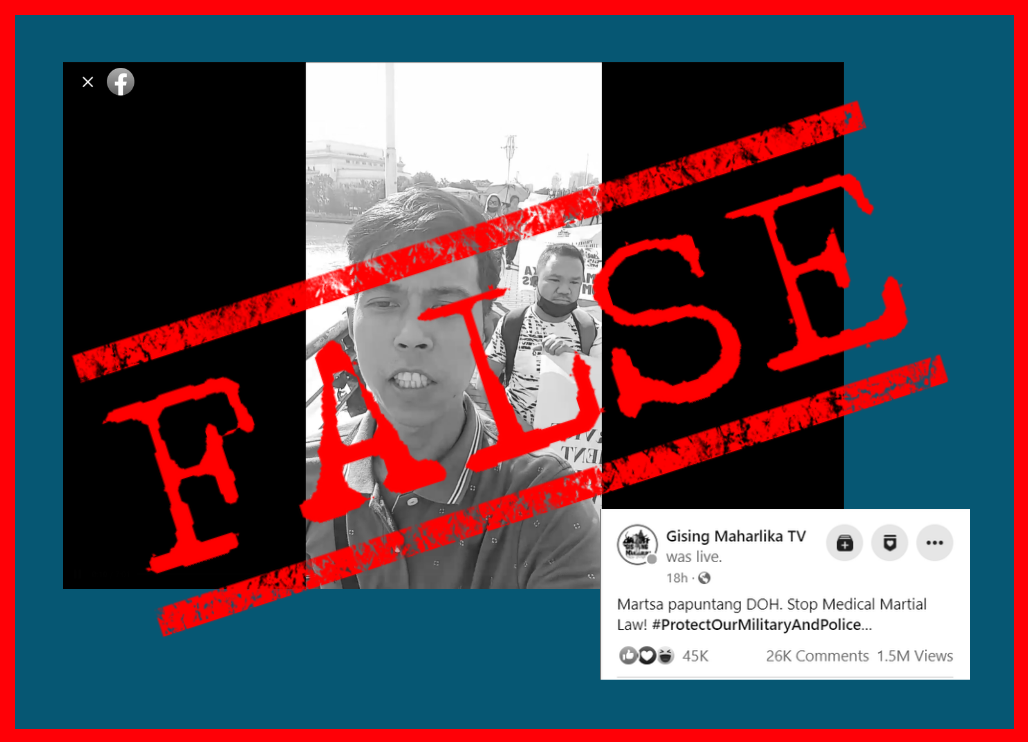As the Philippines “races against the variants” of the coronavirus disease 2019 (COVID-19) virus, Carlito Galvez Jr., chief implementer of the national pandemic response, stressed the need to “minimize wastage” of the vaccines at the local level.
“Ang bakuna ay ginto, so kailangan talaga ‘yung lahat ng nakakatanggap nito na mga local government unit (LGU) … they have to preserve the efficacy and safety of this vaccine. Kasi once na na-compromise ang safety at storage, it will also endanger the health of our people,” he said during a July 16 media forum.
(The vaccine is gold, so the LGUs that receive them … they have to preserve the efficacy and safety of this vaccine. Because once the safety and storage are compromised, it will also endanger the health of our people.)
Almost five months into the implementation of the country’s COVID-19 vaccination program, challenges continue to hound some LGUs tasked to administer the jabs.
Here are three things you need to know about vaccine wastage:
1. What is vaccine wastage?
Vaccine wastage can happen in opened or unopened vials, according to the World Health Organization (WHO).
Opened vials can be wasted through suspected contamination or not drawing the number of doses indicated on a vial, among others.
Meanwhile, wastage in unopened vials can most likely occur during the storage and transportation of vaccines, said the Department of Health (DOH) in a letter to VERA Files Fact Check. The presence of “inefficiencies in the supply chain system” may lead to expiration, breakages of vials, and exposure to wrong temperatures, it added.
Locally, wastage happens more often in unopened vials, primarily due to “oversight in the monitoring of vaccine storage temperatures,” the DOH said.
If stored at inadequate temperatures, the vaccines may have reduced potency and offer less protection for the patient, a vaccinologist has told VERA Files Fact Check. (See VERA FILES FACT SHEET: What it takes to deliver the COVID-19 vaccines in the Philippines)
2. Where is wastage happening in the country?
As of July 9, the 17 Centers for Health Development have reported 3,951 wasted doses of COVID-19 vaccines out of the total 18.58 million stock. The Philippines, by this time, had rolled out vaccines developed by Sinovac, Pfizer-BioNTech, Gamaleya, AstraZeneca, and Moderna.
Note: Navigate through this interactive map by hovering over the highlighted areas. Click the arrows to see the total wastage per vaccine.
Data from the DOH showed that Region XII (SOCCSKSARGEN) recorded the highest number of wasted COVID-19 vaccines at 863 doses. Of these, at least 93% were Sinovac vaccines, which are single-dose vials that use the standard refrigerator temperatures between 2 and 8 degrees Celsius.
In May, over 380 COVID-19 jabs were wasted in Makilala, North Cotabato due to “negligence” during its transfer to a police station following a power outage. Health officials failed to plug in the refrigerator. (See One month after: DOH has yet to identify who’s liable for wasted COVID-19 vaccines in North Cotabato)
Following the incident, the National Vaccination Operations Center (NVOC) issued an advisory dated May 31 stating that vaccination sites without back-up power sources “may temporarily store” their vaccines at the regional or local vaccine operations center.
The DOH said the country’s vaccine wastage rate is “below 1%” of the available jabs, which is within the WHO’s recommendation.
3. How can vaccine wastage be avoided?
To ensure the smooth delivery and maintain the quality of vaccines, the NVOC is eyeing more cold chain equipment and storage facilities at the national capital and selected regions for distribution to identified LGUs “with known gaps,” the DOH said.
At least five regions “are still incapable of handling Pfizer’s vaccine,” which requires ultracold storage at minus 80 to minus 60 degrees Celsius, according to health undersecretary Maria Rosario Singh-Vergeire. These regions are the Bangsamoro Autonomous Region in Muslim Mindanao (BARMM), Caraga, SOCCSKSARGEN, Bicol region, and MIMAROPA.
“‘Yung mga vaccine na hindi nila kayang i-handle, talagang imiminimize namin ‘yun sa mga LGUs na hindi prepared (For the vaccines that they cannot handle, we will really minimize these in LGUs which are not prepared),” said Galvez, also the country’s vaccine czar.
Beaver Tamesis, president of the Pharmaceutical and Healthcare Association of the Philippines (PHAP), explained that “for [u]ltracold chain type of product, even the major distributors are not that confident outside of Metro Manila and Cebu.”
But he said pharmaceutical companies are finding ways to “reduce the rigidity” of their vaccines’ storage conditions to make these more accessible.
Tamesis is also the president and managing director of Merck, Sharp, & Dohme Philippines, a drugmaker owned by the United States (U.S.) pharmaceutical company Merck.
In May, the U.S. FDA “extended the time” that the Pfizer COVID-19 vaccines can be stored in a fridge between 2 and 8 degrees Celsius, “making the vaccine more widely available.” From only five days in refrigerated conditions, the doses can now be stored for up to 30 days after it has been thawed.
“There’s a lot that we’re learning about the vaccines, including their storage conditions aside from the long-term clinical efficacy or the effect on the patient,” Tamesis added. “As time evolves, our knowledge will continue to evolve, and we’ll be better prepared with these new types of events.”
The DOH also highlighted the importance of “continuous training and re-training of those responsible for handling and managing the vaccines.”
On May 14, the NVOC released additional guidance on COVID-19 vaccine storage, handling, and distribution requiring “a vaccine security and safety officer and alternate per facility shall be designated among health workers managing the vaccines.”
Temperatures must be checked at least four times a day, seven days a week, including holidays, it read.
Sources
People’s Television Network, Press briefing with Presidential Spokesperson Harry Roque, June 24, 2021
World Health Organization, Monitoring vaccine wastage at country level
World Health Organization, Revising global indicative wastage rates: a WHO initiative for better planning and forecasting of vaccine supply needs, April 8, 2019
National Vaccination Operations Center, Advisory No. 42, May 14, 2021
National Vaccination Operations Center, Advisory No. 49, May 31, 2021
United States Food and Drug Administration, FDA In Brief: FDA Authorizes Longer Time for Refrigerator Storage of Thawed Pfizer-BioNTech COVID-19 Vaccine Prior to Dilution, Making Vaccine More Widely Available, May 19, 2021
Department of Health, Philippine National COVID-19 Vaccination Deployment Plan
Department of Health, Beat COVID-19 Media Forum, June 21, 2021
Philippine Food and Drug Administration, Emergency Use Authorization (EUA) for SARS-CoV-2 Vaccine (Vero Cell), Inactivated [CoronaVac], Sinovac Life Sciences Co., Ltd, Feb. 22, 2021
Philippines signs Pfizer deal
- Reuters, Philippines seals biggest COVID-19 vaccine order yet, for 40 mln Pfizer doses, June 20, 2021
- ABS-CBN News, Philippines, Pfizer ink deal for 40 million COVID-19 vaccine doses – gov’t, June 20, 2021
- Inquirer.net, PH seals deal for 40 million doses of Pfizer COVID-19 vaccine, June 20, 2021
(Guided by the code of principles of the International Fact-Checking Network at Poynter, VERA Files tracks the false claims, flip-flops, misleading statements of public officials and figures, and debunks them with factual evidence. Find out more about this initiative and our methodology.)
